South Africa is one of the world’s greatest suppliers of wildlife trophies, many of them from captive-bred animals. The greatest number are shot by people from the US. From tigers to vervet monkeys, it’s all legal.
A report by the Humane Society International/Africa (HSI/Africa) — Trophy Hunting by the Numbers — quantifies a global industry dedicated to the “sport” of accumulating wild animal parts for bragging rights by largely non-African hunters. It was released to coincide with World Wildlife Day today (Thursday).
South Africa is listed as the world’s second-largest exporter of hunting trophies (after Canada), with most going to the US, followed by Spain, Russia and Denmark.
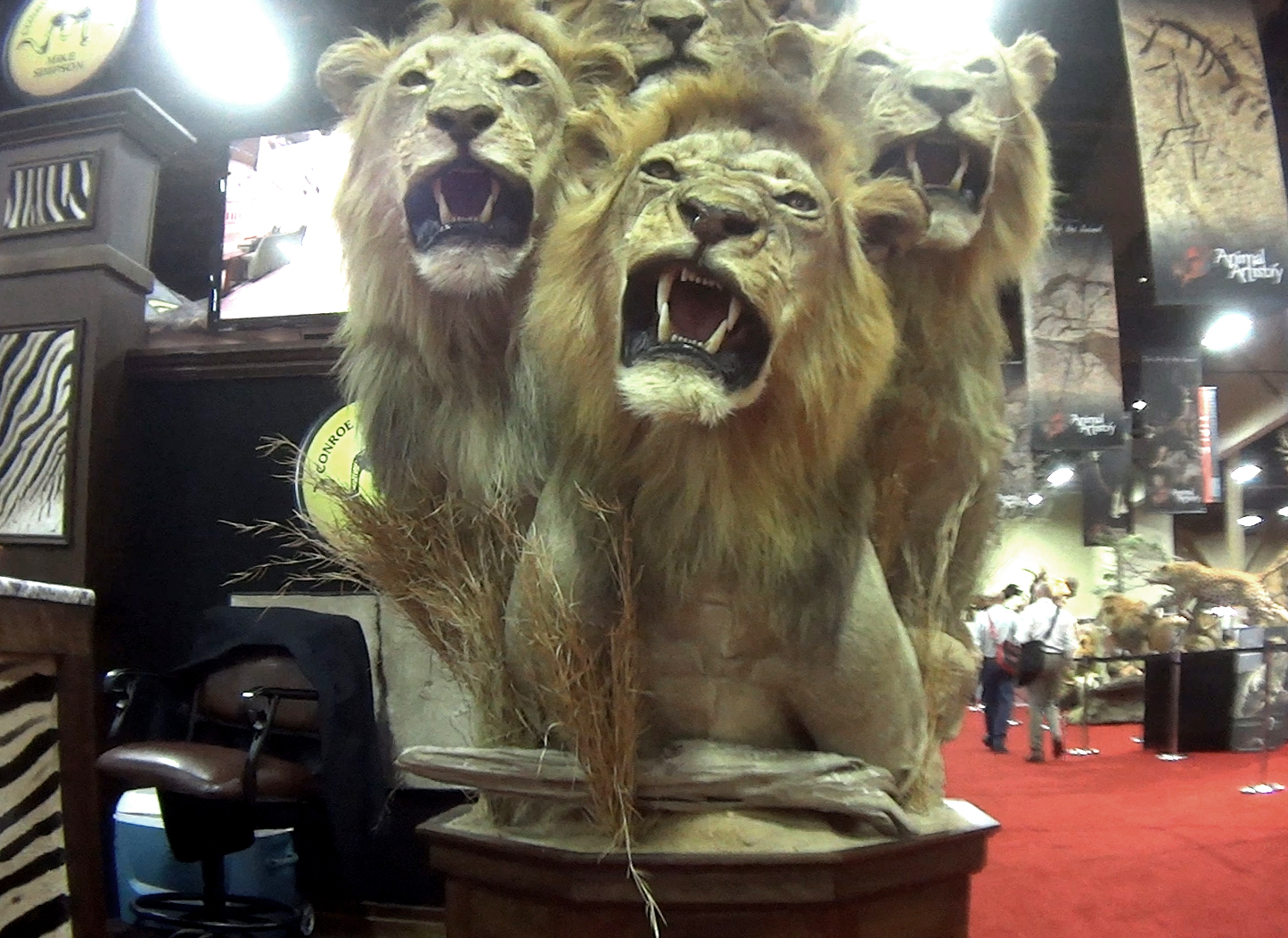 Video screen grabs from an undercover investigation at Safari Club International‘s annual hunters‘ convention in Las Vegas. (Photo: HSI / Africa)
Video screen grabs from an undercover investigation at Safari Club International‘s annual hunters‘ convention in Las Vegas. (Photo: HSI / Africa)
The report is, as it says, about numbers and coincides with the latest hunting quotas for this year released by the Department of the Environment: 10 critically endangered black rhino, 150 endangered elephants — which will mostly be hunted in the Associated Private Nature Reserves and thus be from free-ranging Kruger Park herds — and 10 leopards, listed as vulnerable and with no known population estimates to back the allocation.
This is concerning news, says the report, especially on World Wildlife Day, which is intended to celebrate our collective natural heritage each year on 3 March and draw attention to the plight of threatened and endangered wild animals.
Between 2014 and 2018 (the latest complete data set from the UN trade organisation CITES), South Africa exported 21,018 trophies, an average of 4,204 a year. Of these, 4,176 were lion, 1,337 were elephant, 1,295 were hippo, 675 were rhino and 574 were leopard.
One in three trophy kills were of animals captive-bred for hunting, including most of the lions. However, nearly all elephants, rhinos and leopards hunted were wild-sourced.
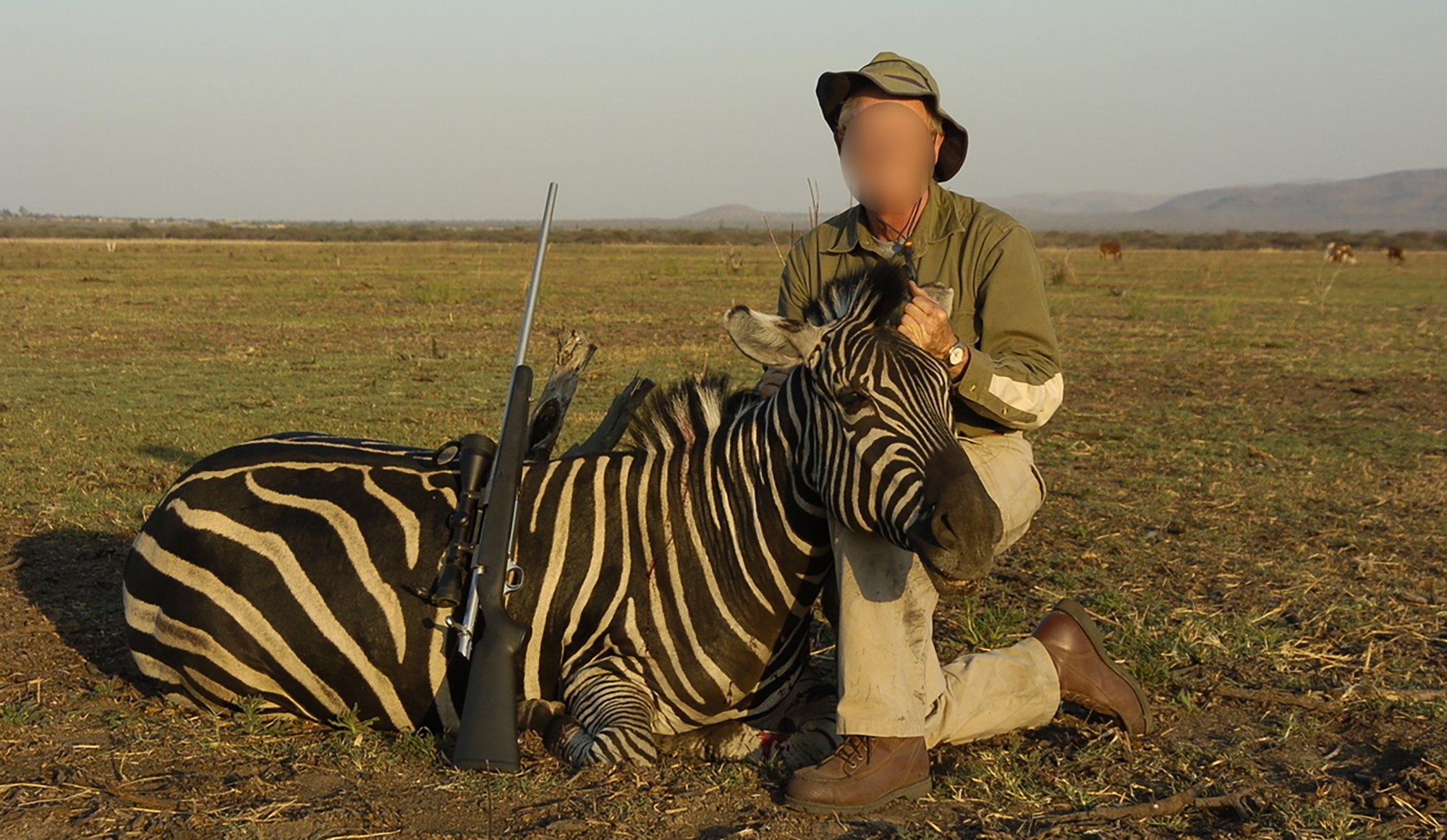 A hunter with his kill. (Photo: HSI / Africa)
A hunter with his kill. (Photo: HSI / Africa)
Smaller species included 2,729 baboons, 2,422 southern lechwe, 1,693 caracals, 1,453 vervet monkeys, 496 civets, 410 blue duikers, 385 servals, 229 Barbary sheep, 250 honey badgers and a brown bear.
Critically endangered, endangered and vulnerable non-native species were also sourced and hunted in South Africa, including tigers, Indian hog deer, Arabian oryx and addax.
By far the largest importer of trophies was the US (54%), followed by Spain (5%), Russia (4%) and Denmark (3%). Other countries included Hungary, Mexico, China, Australia, Poland, Germany, the UK and France.
During the period, 2,227 trophies were imported to South Africa, mostly elephant, Hartmann’s mountain zebra, leopard and hippo, mainly from Namibia, Zimbabwe and Mozambique.
“The results of this study,” says the report, “demonstrate that South Africa is a major player in the international trophy hunting industry. This is something that the South Africa trophy hunting industry and the government of South Africa have promoted.
“[They] further proudly claim that trophy hunting contributes to conservation. The truth, as revealed in this study, is that trophy hunting as practised in South Africa is based on highly managed and manipulated animals as opposed to wild animals.
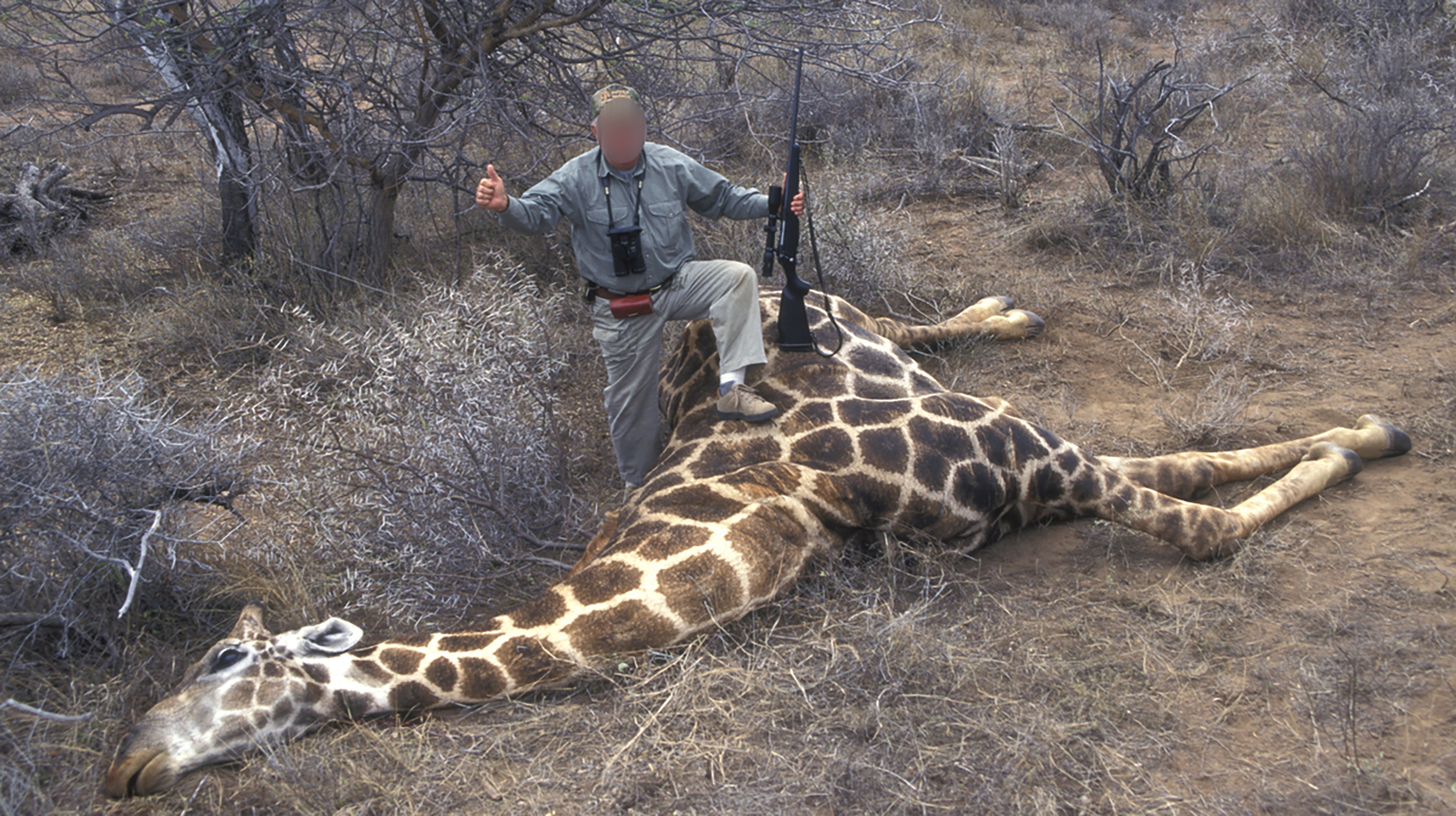 A hunter with his kill. (Photo: HSI / Africa)
A hunter with his kill. (Photo: HSI / Africa)
“In South Africa, hunted animals are bred, bought, sold, transported and otherwise processed and ultimately delivered to a property where a trophy hunter can kill them, and where the kill is often guaranteed. It is all about the money that can be made by industrialising, managing and manipulating wildlife for economic gain.
“This has significant negative impacts on animal welfare, provides opportunities for illegal wildlife trade and seriously undermines claims that trophy hunting contributes to conservation.”
Although largely statistical, the report also noted some hunting methods suggested by hunt outfitters:
- “Baboons are similar to a human in physiology, so a chest shot will suffice.”
- “If you aren’t hunting aardwolf in Africa, but the opportunity to take one comes while on a different hunt, then whatever rifle you have at the moment will do the job. Try to place the bullet just behind the shoulder, about one-third of the way up the body.”
- “Hunting blue duiker is most likely best done using a shotgun. Classic shot placement of course would be on or just behind the shoulder. However, when hunting blue duiker, one may have to settle for a hit wherever it can be made.”
- “Hunting serval with dogs is usually conducted in the mornings. After lunch you can nap and then go out after dark, spotlighting.”
- “This outfitter utilises a live camera system that allows the honey badger bait sites to be monitored 24 hours a day from the hunting lodge. You can actually watch the bait sites while you are eating or relaxing at the lodge!”
- “African wildcat hunting mainly takes place during a hunt for other animals. Should the African wildcat be facing away, then what’s commonly called ‘The Texas Brain Shot’ — aiming at the base of the tail where it joins the body — will put it down.”
- “When hit well, the vervet monkey won’t go very far. They leave a poor blood trail because they bleed out rapidly. Unless the monkey goes down and stays down, wait about 15 minutes before doing a follow-up.”
An economic review of eight countries in Africa, including South Africa, demonstrated that the total economic contribution of trophy hunters was a mere 0.03% of the gross domestic product in those eight countries.
Conservation experts and professionals say that trophy hunting “yields low returns at household levels with only a fraction of generated income reaching local communities”.
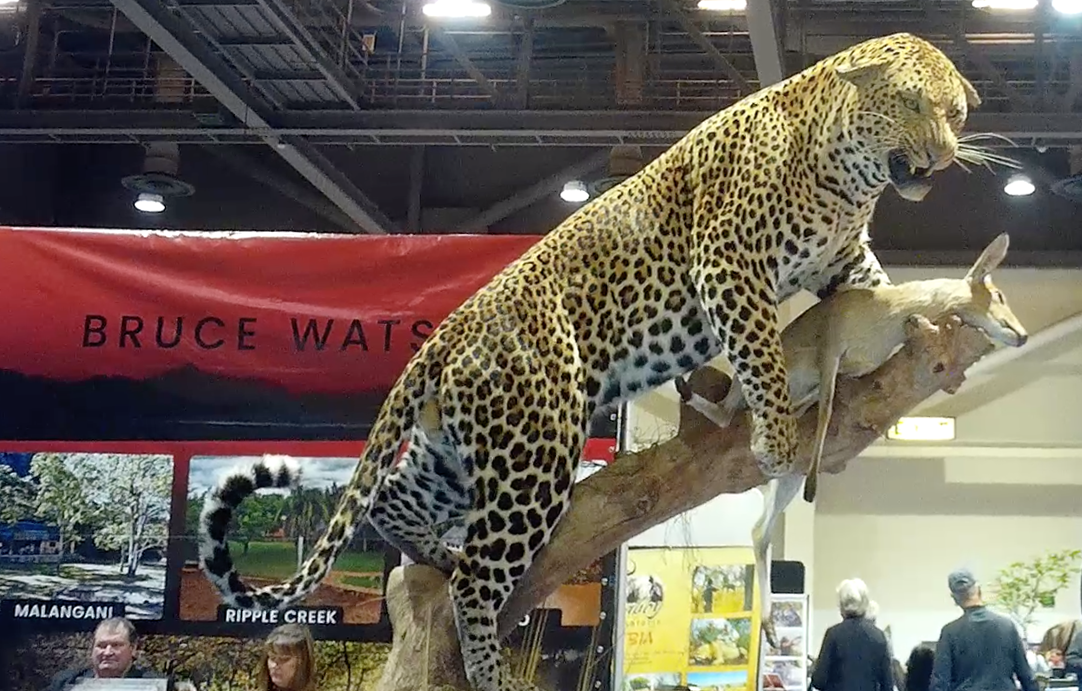 Leopard taxidermy at the annual SCI convention in 2020. (Photo: HSI / Africa)
Leopard taxidermy at the annual SCI convention in 2020. (Photo: HSI / Africa)
“We are terribly disappointed that the DFFE [Department of Fisheries, Forestry and the Environment] is failing in its duty to protect our threatened and endangered wildlife species,” says Dr Audrey Delsink, wildlife director for HSI/Africa.
“It’s unacceptable that we allow people to hunt endangered and critically endangered animals for the purpose of collecting their remains as trophies.
“The claim that trophy hunting contributes to conservation cannot be justified in light of the evidence demonstrating that one third of South Africa’s hunting trophies are captive-bred animals and many are non-native or species not subject to science-based population management.
“The captive breeding and intensive farming of wild animals in South Africa for profit often harms conservation efforts, with negative impacts on biodiversity when protected landscapes are carved up into breeding camps and predators are targeted as competition.
“Killing animals for ‘fun’ is part of the archaic ‘if it pays it stays’ concept that demands immediate change. Killing animals for pleasure has no place in conservation.” DM/OBP




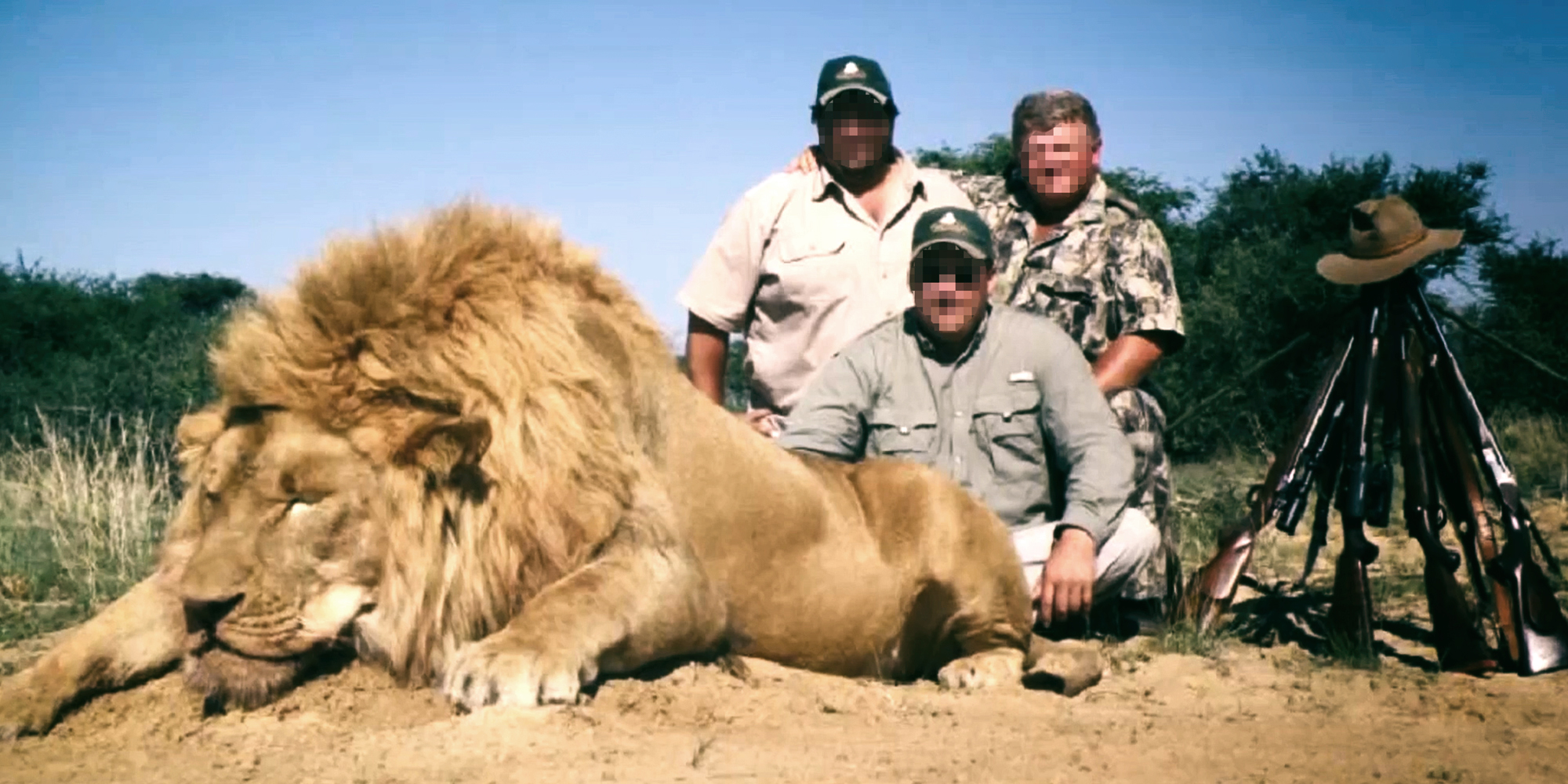 Leopard taxidermy at the annual SCI convention in 2020. (Photo: HSI / Africa)
Leopard taxidermy at the annual SCI convention in 2020. (Photo: HSI / Africa) 